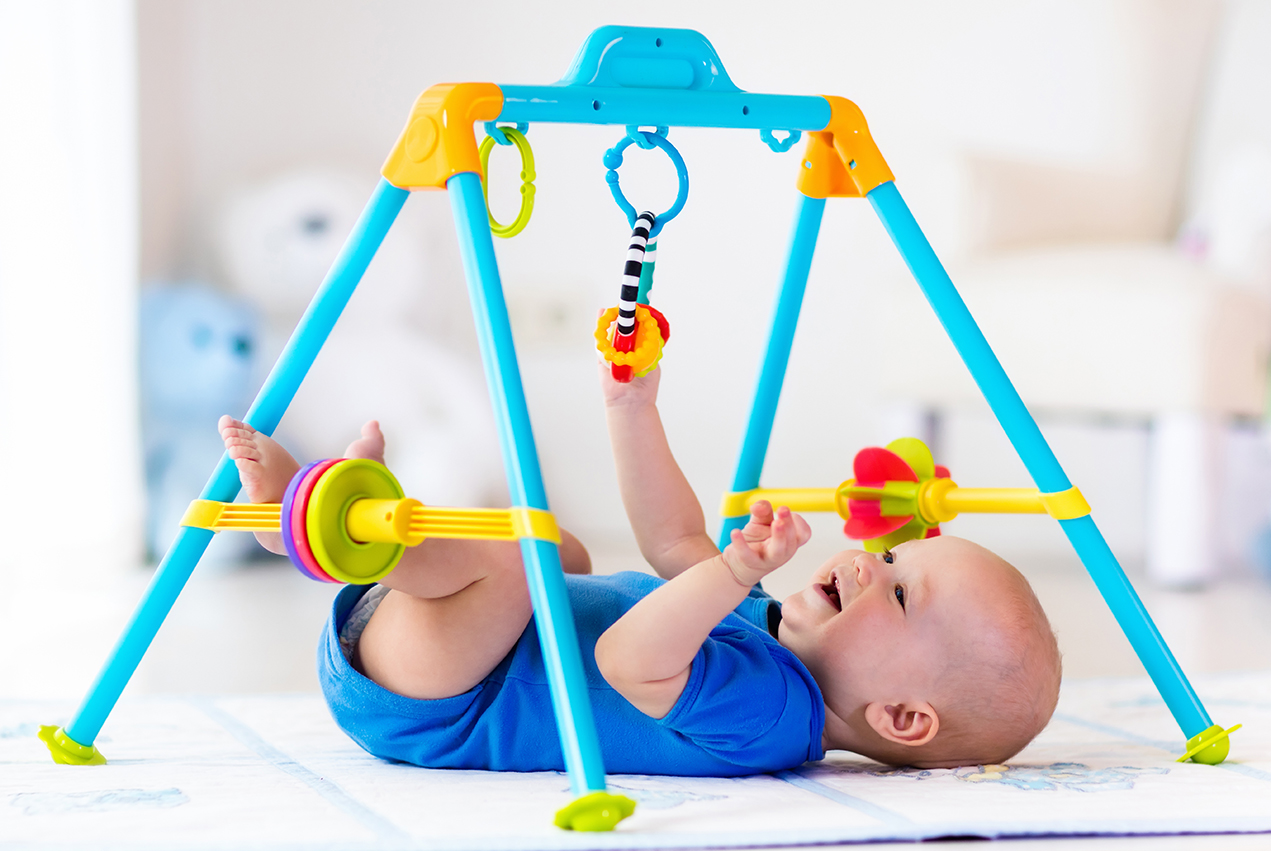Infants who are born early or at low birthweight can be at risk for cerebral palsy, a group of disorders that affect a person’s ability to move and maintain balance and posture. It is often caused by brain damage before birth.
Stacey Dusing, PhD, PT, director of the USC Motor Development Lab, is a co-principal investigator for a new National Institutes of Health grant that will compare interventions for infants with or at high risk of developing cerebral palsy. One group will receive a larger-than-usual dose of traditional physical therapy, which focuses on movement, while the other group receives the same amount of therapy that combines motor skills with cognitive skills, called Sitting Together and Reaching to Play, or START-Play.
The new study will take place over three sites across the United States, recruiting 150 infants between 8 and 24 months old who have motor delays or early signs of cerebral palsy. The infants will be randomly placed in one of the two groups for 24 visits over a three-month period, with follow-up assessments at three, six, and 12 months after enrollment. Regina Harbourne, PhD, PT, a physical therapist and researcher at Duquesne University is the other co-principal investigator. The University of Nebraska-Lincoln serves as the data management site. The University of Washington and the University of Nebraska Medical Center will also enroll children for the study.
Rethinking the physical therapy approach for at-risk infants
The current standard of care for infants at risk of developing cerebral palsy is early intervention, but that can mean a number of different things, said Dusing. “Intervention tends to be very ‘wait and see.’” Dusing said. “We are identifying that this is probably not the best practice for kids.”
Physical therapy for infants typically works in skills like rolling, crawling and walking, Dusing explained. But that’s not the only issue.
“Kids don’t move just to move. They move to access the world, to pick up toys, to bang things together,” she explains. She and her research team had the idea to change the interventions to focus on thinking as the primary skill, to weave motor and cognitive learning together.
A new approach to the utilization of toys
As this theory is tested in the study, the biggest difference is how therapists use things like toys in the session, Dusing explained: If a therapist is helping a child crawl, she’d typically show the child a toy and then move it further away, to coax the child into extending the movement. But when incorporating cognitive learning alongside movement, a therapist would use the same toy, engage with it, and then encourage the children to do something harder with the toy, like putting the toy inside a container. That way, the child is learning something about how to use the object in addition to how to move.
Since both interventions focus on movement, Dusing said she expects the infants’ motor skills will be similar at the end of the study — but she expects there will be more improvements in the cognitive skills of the group getting the START-Play therapy. “We describe it as getting cognition for free in this therapy, since we get equal motor gains,” she said. In an earlier study of START-Play, the gains persisted beyond the intervention timeframe.
The ultimate goal, Dusing explained, is to understand better what type of physical therapy is the most effective for children who have motor delays and cerebral palsy. Dusing has worked as a pediatric physical therapist for 23 years, and one of the biggest questions in the field is what interventions are actually backed with strong evidence. “There are a lot of interventions for young kids that don’t have a lot of evidence behind them,” she said. “We don’t know right now what is effective in these groups, and we want to provide that information to clinicians and parents.”
— Katharine Gammon


